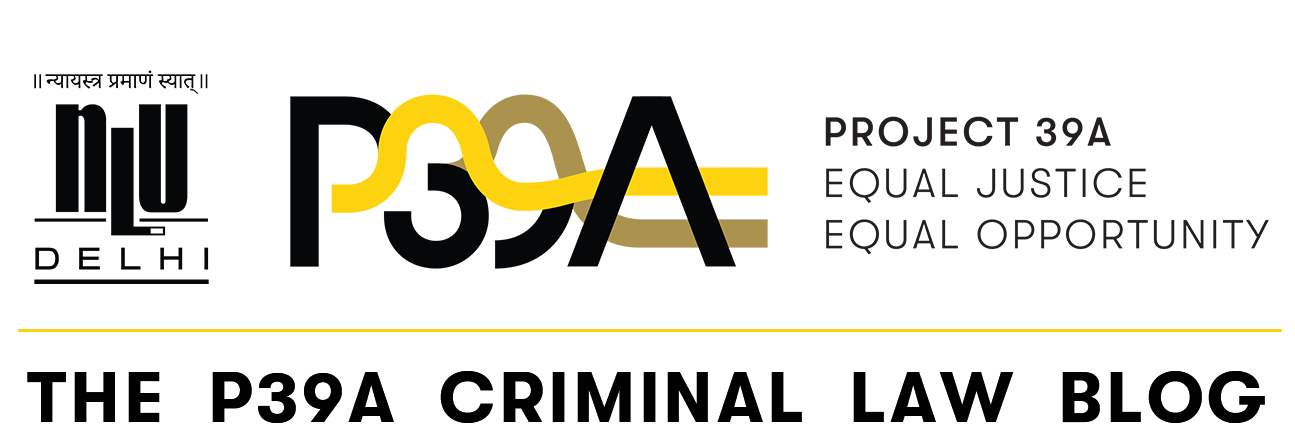One of the most extensively debated topics in philosophy and science emerges from the tussle between free will and determinism. This debate has been the subject of numerous films and has added complexity to the storytelling.
Shabnam and her partner Saleem were sentenced to death in 2010 for the murder of seven members of Shabnam’s family. Over the years, all aspects of Shabnam’s life have become a public spectacle: from the “saga” of Shabnam and Saleem’s “bloody and murderous love” to her pregnancy and the birth of her son. As recently as March 2021, a mainstream news media channel reported on an incarcerated Saleem writing couplets in the memory of Shabnam, deemed his “Anarkali”.
Evaluating aggravating and mitigating circumstances facilitate determining just sentences. Disregarding the crucial role mitigating circumstances play in the process is a bad precedent: it encourages a narrow reading of the law that supports increased (and not necessarily fair) punishment by Courts across the country.
This episode of the 39A podcast discusses the science behind forensic DNA profiling and its scientific and legal practice in India. The conversation further looks at the DNA Technology (Use & Application) Regulation Bill, 2019 and how the current version of the Bill overlooks the issues with the forensic science system currently functioning in India.
Criminal law practitioners from different parts of the country share their experiences on the varied approaches undertaken by each jurisdiction in dealing with the challenges posed by the pandemic and the impact of the transition from physical to online proceedings on access to justice.
In this episode of The 39A Podcast, Professor Vijay Raghavan and Dr. Anup Surendranath discuss the institutional imagination of prisons in India and the manner in which it has interacted with the COVID-19 pandemic. The conversation looks at whether the measures taken by prisons to control the pandemic were at best management strategies and failed to incorporate ‘right to health’ perspectives.
In this episode of The 39A Dialogues, Senior Advocate and criminal law practitioner Ms. Nitya Ramakrishnan discusses what sets apart the stringent bail provision under the Unlawful Activities Prevention Act, 1967 and makes it almost impossible for an accused to secure bail once charged for offences of ‘terrorist activities’ and ‘terrorist organization’ under the Act. She comments on the decision of the Delhi High Court from June 2021, granting bail to three student activists – Asif Iqbal Tanha, Natasha Narwal and Devangana Kalita while coming to the finding that that their acts of protests against the Citizenship Amendment Act, 2019 did not meet the standard of a ‘terrorist act’ as defined under the UAPA. Ms. Ramakrishnan argues that the decision of the Delhi High Court is logically sound and does not come in conflict with the Supreme Court’s 2019 landmark ruling in Zahoor Ahmad Shah Watali.
Henry Shue, ‘Torture in Dreamland: Disposing of the Ticking Bomb‘, Case Western Reserve Journal of International Law, 2006 The most…
The Constitution of India is a document of aspiration. Conceived as what recent scholarship has called a “break from the (colonial) past”, it is accepted knowledge now that the Indian Constitution aspired to establish a state that aimed to replace colonial authority with a democratic republic and that aimed a state-led revolution against an oppressive social order.
In 2019, the Ministry of Home Affairs commissioned the All India Citizens Survey of Police Services (‘AICPS’). It is a nationwide public perception survey aimed to suggest measures to ‘provide citizen centric police services’ in India. Its scope includes an assessment of the impact of police services on the public, gauging perceptions of safety and suggestions on measures to improve public satisfaction of the police.


